First Maine Cat flying bridge P-47, a Garmin horror show?
My first impression of this just-launched Maine Cat P-47 last June was all about how well the flying bridge looked on what I’d only known previously (and almost bought) as an express style design, and how much useful space it added. But, my, what a mess I found when I went aboard. The poor owner — just about to embark on an already delayed delivery trip to his home waters on the Great Lakes — gamely listed all the not-yet-functioning parts of the boat’s elaborate Garmin networks while sitting in a main salon littered with bits and pieces of other unfinished systems. While delays for complex, semi-custom boats like this are nearly a cliche, and possibly worse in these tight times, this case seemed particularly egregious. However, I’ve stayed in touch with this gentleman and am relieved to report that he’s a pretty happy boat owner today…
Someone buying a system like the one diagrammed below (is any other manufacturer producing schematics as good?) would naturally have high expectations, but my recollection of conversations with the owner goes as follows: When I visited, the XM weather/audio, the tank adapters, the AIS 600, the VHF200s, and one of three GPSMap 7215s were either non-functional or flaky in some way. The autopilot purportedly worked great, but blew a drive during the delivery trip, and the AIS, once working, seemed to interfere with the VHF200 sharing its antenna. And even when there’s only one electronics manufacturer involved, it’s still hard to pin down the culprit. Did the Maine Cat installer wire things badly, or was it a failure on the part of the Garmin commissioning team, or was the equipment just faulty? In retrospect, it sounds like some of each — a household Ethernet cable was the issue with the 7215 (all Garmin Marine Network cables are crossover types, it turns out), and the Garmin team had the same problem with the AIS setup USB drivers I did (now fixed) — plus the poor environment of a late boat getting rushed out the door.
But here’s the thing: Neither Maine Cat nor Garmin shirked their responsibilities; calls were answered, and technicians rendezvoused with this boat during its passage and ultimately at its home slip until everything was working pretty well. Which is why the owner is pretty happy (aside from the fact that he’s a got a large, lovely and luxurious yacht that can do 24 knots with only a pair of 220hp Volvo Pentas, and will slip along at 15 with efficiency and comfort, despite the added weight of flying bridge, big battery bank, etc.). Still, he’s hoping that Garmin is working on some software improvements…
 He’s particularly aggrieved about his system’s alarming functions, and I share his pain. Though I find that lots of marine electronics are too aggressive or too crude about alarms, and though Garmin has definitely improved the AIS alarms many of us complained about last summer, it seems to remain one of the company’s weak areas. For instance, I was quite surprised to learn that turning off an alarm on one networked Garmin MFD does not turn it off on the other displays in the network. That’s gotta get fixed! The good news is that Garmin is good about updates…
He’s particularly aggrieved about his system’s alarming functions, and I share his pain. Though I find that lots of marine electronics are too aggressive or too crude about alarms, and though Garmin has definitely improved the AIS alarms many of us complained about last summer, it seems to remain one of the company’s weak areas. For instance, I was quite surprised to learn that turning off an alarm on one networked Garmin MFD does not turn it off on the other displays in the network. That’s gotta get fixed! The good news is that Garmin is good about updates…
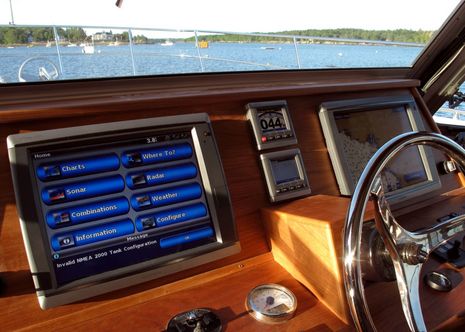 In fact, one reason I’m posting the photo below — taken by a Garmin tech when working on Crackerjack in the Great Lakes — is that it shows an instrument function I haven’t yet seen on a Garmin network MFD (though I’m now testing a 7212). It looks like you can touch change the data screen displayed right in the MFD window, which is neat. This picture also shows what the boat’s 110 amp auxiliary alternators are putting out. The fact that many of the electronics are running on 24v — still fairly rare, and probably especially so for Garmin — may have had to do with some of the teething problems. And the fact that a big 24v AGM battery bank sometimes actually charges at over 28v is why a particular model of OceanLED underwater lights was another dissappointment. Though sold for 12 & 24 systems, they cut out when they see more than 28v (you want devices rated for 9-32v)…
In fact, one reason I’m posting the photo below — taken by a Garmin tech when working on Crackerjack in the Great Lakes — is that it shows an instrument function I haven’t yet seen on a Garmin network MFD (though I’m now testing a 7212). It looks like you can touch change the data screen displayed right in the MFD window, which is neat. This picture also shows what the boat’s 110 amp auxiliary alternators are putting out. The fact that many of the electronics are running on 24v — still fairly rare, and probably especially so for Garmin — may have had to do with some of the teething problems. And the fact that a big 24v AGM battery bank sometimes actually charges at over 28v is why a particular model of OceanLED underwater lights was another dissappointment. Though sold for 12 & 24 systems, they cut out when they see more than 28v (you want devices rated for 9-32v)…
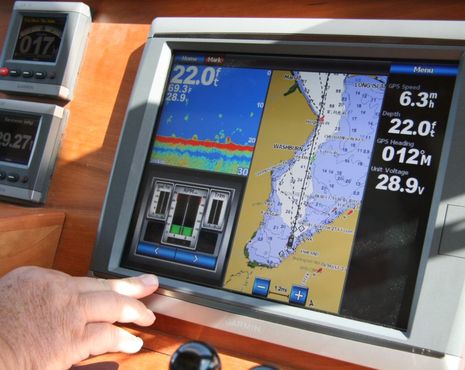 Overall, though, this owner is really pleased with his power system, which includes solar panels and a Victron Multi Control invertor/charger (recently discussed here). He feels free to run all sorts of appliances at anchor, while rarely running his gen set, and also doesn’t worry about overloading the boat’s single 30 amp shore cable when he’s tied up, because the Victron manages the spikes. The story on his Climma air conditioning units isn’t so good, though, even if they are compact, quiet, and efficient. While he was underway recently, it was lucky that he went below for a while, because some noise and smell led him to discover 8-inch flames coming out of a failed Climma installed in a cabinet made of seasoned cherry. The situation could have gotten much worse.
Overall, though, this owner is really pleased with his power system, which includes solar panels and a Victron Multi Control invertor/charger (recently discussed here). He feels free to run all sorts of appliances at anchor, while rarely running his gen set, and also doesn’t worry about overloading the boat’s single 30 amp shore cable when he’s tied up, because the Victron manages the spikes. The story on his Climma air conditioning units isn’t so good, though, even if they are compact, quiet, and efficient. While he was underway recently, it was lucky that he went below for a while, because some noise and smell led him to discover 8-inch flames coming out of a failed Climma installed in a cabinet made of seasoned cherry. The situation could have gotten much worse.
Does all this make you shy away from new boats, especially semi custom ones, or even Garmin electronics? Well, the truth is that stories like this are common, just swap in different boat and systems manufacturer names. But so are owner’s like Crackerjack’s, who seem to survive the process and even grin about. I’ll note too that Maine Cat is sticking with Garmin as its house brand, and the owner of the next flying bridge P47 is too. And even though his build is also late, he’s still very pumped. In fact, he told me yesterday that some of the design changes he and his wife worked out, partly described here, will make this P47 a “real pimp-mobile”. I’m hoping for a ride, though I don’t have the appropriate outfit.


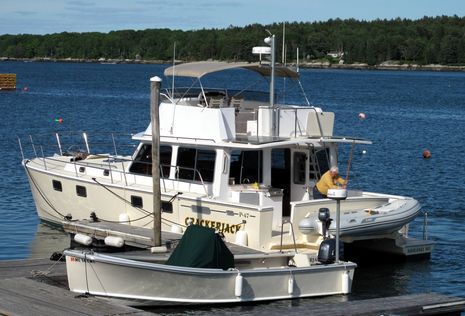
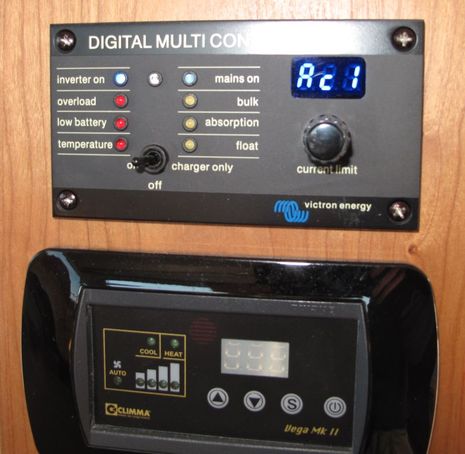

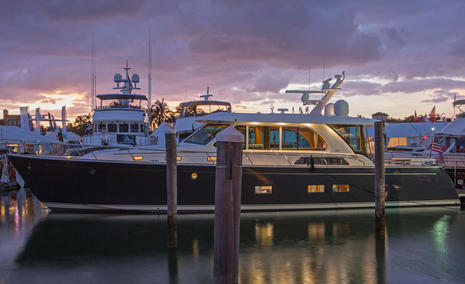










Ben,
The Maretron N2k Builder allowed me to completely diagram and document my boats N2k installation. If you would like to see it I can send it as an attachment to an email. Bob
It’s in the nature of complex systems that there will be teething pains during and immediately after commissioning. These sorts of troubles aren’t unique to Garmin- every computer maker, every mechanical/electrical/HVAC contractor, every network admin goes through the same thing every time they try something new and different.
Two of the issues at play here (again, not unique to Garmin) are, IMHO, somewhat worrying.
The first is a self-destructive tendency on the part of many manufacturers to replace skilled engineers with accountants. The penny-pinching measures that result (stamped instead of forged aluminum, moulded plastic where there really ought to be cast metal) save only a few dollars, but drastically cut the lifespan and reliability of the device.
The second is software QA. I know there’s always a rush to get the code written, and to debug it enough for RTM. But when you put computers in control of safety-critical systems (like autopilots), there are certain safety and reliability principles that must be incorporated from the earliest stages of the software architecture design. When it’s done right, you get stuff like commercial airliner avionics- systems that triple-check everything to keep the plane safe, even with multiple hardware and human errors. When it’s done wrong, or when safety-first principles aren’t included from the start, you get the mess of spaghetti code that turned the Therac 25 into a death ray. Since most marine electronics are closed-source, it’s hard to tell for sure which philosophy is at work- but I suspect there’s more than a bit of quick and dirty spaghetti underlying more than a few critical systems on modern boats.
Both these problems could be solved, but at a price: “progress” would be slower, with longer gaps between fewer new products. If they’re better, safer, more reliable products, I think it’d be a very small price to pay- but I’m afraid the corporate boards will disagree.
Ben I have a Garmin 6212 on the way to my boat. I’m looking forward to seeing how it operates in place of my current 4212 with my 4210 and 3206 and the NMEA2000 network already in place.
I recommend running a stand alone AIS antenna and not using the antenna switching found on most AIS units.
Bill
Bob, please do send your N2KBuilder file, but also create a new entry for it on the Forum, where there’s a collection of designs. I can add an illustration to your entry and make the file available to others.
https://panbo.com/forum/electronics/n2kbuilder-designs/
Matt, Ignorant me had to Google “Therac 25” but what a bad bit of business:
http://en.wikipedia.org/wiki/Therac-25
Bill, I’m not seeing a huge performance difference between the 5212 and 7212, but I suspect that’s because the software hasn’t yet been optimized for what the new series can do.
I have 2 3210s with a 4210 and along with fi50 instruments and a ray marine autopilot connected through an st70.
The only frustration I have is that I can’t get routes to move either way between the 3210 and the 4210 because gamin changed their “standard”.
So I have both a nmea 2000 network and a short gamin network.
Have you figured out a solution to this issue since you have a 4212 and a 3206?
Glenn
Glenn, I don’t use the 3206 for waypoints. It’s really a back up and used for a larger overview in plotter mode than my current 4212 or 4210 or video from my camera system. I’ll check it out though and report back. I actually never noticed this problem.
Have you contacted Garmin if so what do they have to say?
Bill
I have also experienced the momentary loss of audio on the VHF while the Garmin AIS 600 is operational and sharing the same antenna. At first, I thought it was the C.G. radio operator who was releasing the Mic key prematurely, but than found it was happening on all received transmissions. Personally, I’m skeptical about the “ClearTrack” feature on the Garmin AIS 600. Here is how Garmin describes it:
“The AIS 600 also employs ClearTrack™ technology, which ensures there’s no interruption of AIS traffic position while the VHF radio is in use.”
I’m not an engineer, but how can one antenna serve as a simultaneous, AIS receive, VHF receive, AIS transmit, VHF transmit, without a loss of function on one or more of them? I believe the only solution is to have a dedicated AIS antenna and forget about sharing one VHF on the masthead with both devices. I can’t afford to have a compromised VHF radio not even for my Garmin AIS 600.
Hope Garmin can fix this as both the AIS and VHF are very important safety tools aboard our boat.
Hook the existing VHF antenna directly to the GARMIN 200VHF (or whatever VHF radio you are using)and the dedicated AIS antenna to the antenna port on the AIS transponder. To be a purist put a 50 ohm dummy load on the VHF transciever port of the AIS transponder.
This effectively eliminates the antenna switching between the units. The switching is done via RF sensing (negotiation) not over the NMEA2000 backbone. It also allows an AIS narrow band antenna to be used instead of a compromise full band VHF antenna.
Bill
Bill,
Thanks for the instructions on this. I’ll look for the narrow band AIS antenna and dummy load.
At first I thought the “ClearTrack” feature worked only with the Garmin VHF200. I’m using the Uniden ES UM625c which is an older radio by todays standards. Right now, I can’t justify changing to the Garmin radio as I see no significant advantage. However, in the case Ben wrote about the audio gap occurred with both Garmin products in the system aboard the Maine Cat. So, I can conclude the VHF has nothing to do with this if it is a confirmed problem.
I used to have a Uniden UM625 I changed to a pair of Garmin VHF200’s because I liked the way the radios NMEA2000 integrated with the AIS and Garmin 4200 Chartplotters. You can actually click on a vessel and then through the plotter send the vessel a DSC call to meet you on the channel you choose. At that point you can negotiate passing information or just confirm your AIS transponder is being seen. It’s a very cool option.
Bill
A couple of thoughts here to chew on.
Early technology adopters need to have the patience to work out the inevitable bugs. It isn’t easy to be on the bleeding edge of technology.
Schedules for complex systems always slip right, and delays often result in shortcuts, and patches to try to keep schedule. Time gained in taking shortcuts, results in greater costs later to fix, and increased maintenance complexities, especially if things were not very well documented, because the schedule kept slipping right.
Owners can be their own worst enemy by setting unrealistic schedules, ie I have planned a very long trip that starts the very day the boat is delivered, and I can’t change the schedule. This is typically an accident waiting to occur. Take several shorter shakedown cruises first. Complex things alway break in locations were you can’t easily get complex parts.
Many owners underestimate the complexity of the systems purchased, and the time investment needed to learn them. Good understanding of the systems aids in providing good feedback to technical support staff when problems occur, and maybe you could figure it out yourself.
This is the largest Garmin system I have heard of, and if I counted correctly, I saw 24 N2K connections. My largest system has 16. I also wonder why the GDL30 was used instead of the GXM51, and why at least a second 17N N2K GPS wasn’t installed (according to the diagram), it came in the box, and would have provided additional GPS redundancy?
It is a beautiful boat, I wish I had one, and was on it now!
I’m tired this Saturday morning, and I have to work the next two days over the Labor day weekend to finish a difficult install. The work was delayed because of substantial engine work,and the owner has to leave on his new untested boat on Tuesday for a long trip. I will be waiting for the call.
Would love a copy of the Maretron diagram.
I’m an electronic marine tech in the Toronto/Great Lakes area.
Paul simply click on the image of the schematic above and you will see the schematic as a full page.
Bob in my Garmin set up the AIS GPS is a Navico NAIS3000 and it will fall over to that as a GPS source if my Garmin GPS NMEA2000 receiver drops out.
I’m not familiar enough with Garmin’s AIS and matching GA-30 GPS antenna to know if this would happen but I think it would.
Bill Lentz
Bill, I think a shake down cruise was planned, but got scratched because of launch delay. Also, I think two redundant GPS were installed.
For all, some good advice, I think, from John Gass of Wayfarer Marine:
“I’m looking at the Ethernet networking layout. We tend to use the Garmin hub for networking rather than the ports on the displays, even in smaller networks. If you use this topology, you can access the radar (or any other networked device) from any one display that’s powered up. With the existing design, the F/B display MUST be on in order for you to get the radar and XM Wx. Other advantages to this approach are scalability, auto-negotiating ports (can use xover/straight cables), and easier service (if this display would ever need to be removed for service (a rare event) the system will still be fully functional).
My approach to installing complex systems is incremental. Got one display up & running? OK, now add the radar to the network. Now plug a second display into the hub/N2k. Add components in discrete areas and fully test the system. Same approach applies to software design.”
http://www.wayfarermarine.com/repair_electronics
Bob Bergoffen’s Maretron N2KBuilder file is now posted here on the Forum:
https://panbo.com/forum/2010/09/ombre-rose-n2k-diagram.html
Ben,
Thank you for the suggestions about the ready made cables and reversing the tees. I have incorporated them in my winter update. This system kind of grew like Topsy as I went along and I didn’t really give much thought to the niceties.
Bob
Thanks Ben, my comments were philosophical, and not specifically directed to toward the Maine Cat. I see the generic problem with a large percentage of new boat deliveries, where owners have waited a long time, and are very eager to take that big planned trip. I know it is difficult to wait till the parents get up on Christmas morning to open all the presents, and I am as guilty as everyone else, but some short trial runs locally usually serve all well, and make for a better long voyage.
John Gass’s observations are correct. I use the hubs on all larger installations, and it make the backs of the units less busy, from a wiring viewpoint. Thanks
Ben, I installed my 6212 and 740 replacing a 4212 and 3206 this past weekend. I am impressed with the full screen video on the 6212 something not available on the 4212. The 4212 always had the border effectively making the video display smaller. The display of the 6212 and 740 seem to be sharper than the replaced displays. I’m only having one problem with the network configuration which has 3 plotters the Garmin 6212, 4210 and 740. I can’t seem to find the menu to enter my MMSI so I am self alarming with my own vessel’s AIS class B is on with the 740. I simply turned off the AIS alarm on the 740 for now. The 6212 and 4210 have a location to enter the vessels MMSI. Perhaps someone here can push me in the right direction. I did download the latest Garmin software after the installation. I have to admit I am very impressed with the display on the 740.
On another topic the underwater Canyon LED’s I was having problems with are Britter they have contacted me and are going to send replacements. +1 for them being responsive.
Bill Lentz
Wireless One
Aw, Bill, you’re confusing me. I don’t recall having to enter my MMSI on the 7212 or 5212 before that, and I don’t see anything about it in the manual. And I don’t have a self alarming problem using a Garmin AIS600. Where did you enter your MMSI, and what transponder are you using?
Also, to avoid reader confusion, isn’t true that the 740 is only networked in terms of NMEA 2000, not Ethernet (i.e. radar and sonar)?
I’m not using a Garmin an NAIS-300L through the NMEA2000 network. The 740 is only connected via the NMEA2000 network. There is deffinately a screen to enter your MMSI on the 4200 and 6200 series plotters.
Bill
Ben this should refresh your memory.
https://panbo.com/archives/2009/11/new_garmin_6-_and_7000_series_class_b_ais_600.html#more
Bill
Where is it, Bill? No mention in the manual. We may have had this conversation last year. I think that entering an MMSI is just a workaround for Navico transponders like yours, whose software was written before NMEA 2000 provided an automatic way to prevent self alarming.
Our comments crossed, Bill. It does seem from that old entry that I found a place to enter an MMSI on the 5212, which indicates a flawed memory (;-) but I sure don’t remember doing it on the 7212. Then again, I haven’t used the 7212 with the Simrad AI50 (accidentally broken) and this is a specific Navico fix, I believe.
I had to enter the MMSI on the 6212 to stop the self alarming from the Navico AIS unit. I just can’t or don’t see the setting for the 740. Like I mentioned I just turned off the AIS alarm on the 740.
Bill
Bill, You may find that you have to turn the AIS alarm off again every time you power up the 740. I know that’s true on the 7212, and kind of a pain when you’re boat’s in harbor that almost invariably has an AIS target within the 500 foot minimum alarm setting.
Again, can you please tell me where the MMSI input is on the 6212, because I can’t remember and it’s not in the manual. I don’t need to know, but others might.
Ben I will be back on the boat tomorrow I will post where it is then.
Bill
Ok from the 6200 or 4200 series main screem
Config. tab
Then “Communications” tab.
Then scrool to the “NMEA2000” tab.
Then “Device List”
Scroll down to the AIS named transponder.
Then the “Review Tab”
The MMSI tab will come up enter it and then press “done”
Self alarming stops as it recognizes your MMSI as no threat.
Does this help Ben?
Bill Lentz
The MMSI tab does not come up on the Garmnin networked 740 (NMEA2000). Perhaps Garmin is not aware of this problem with the Navico NAIS-300L?
Perhaps I should just get a Garmin AIS transponder and be done with it?
Bill